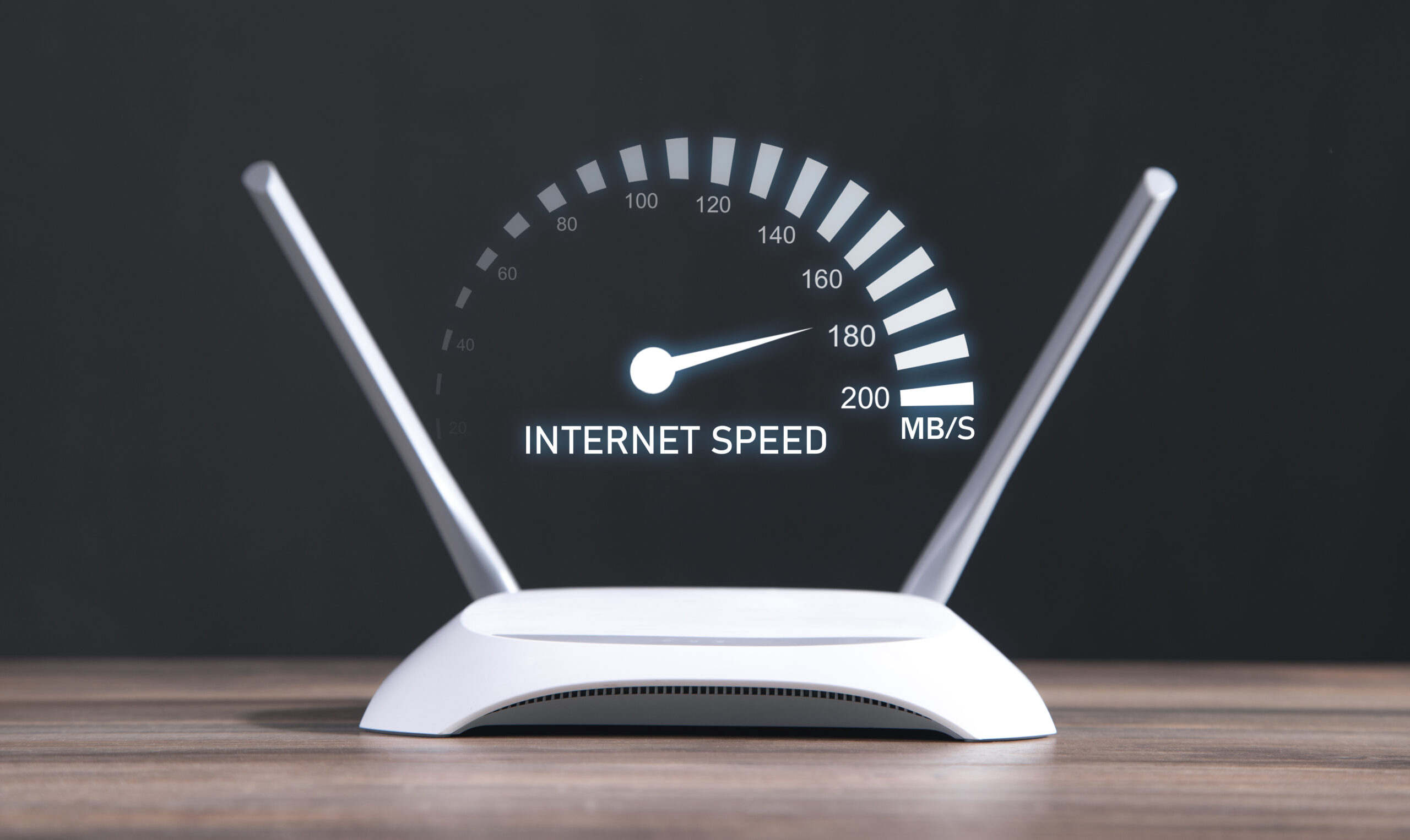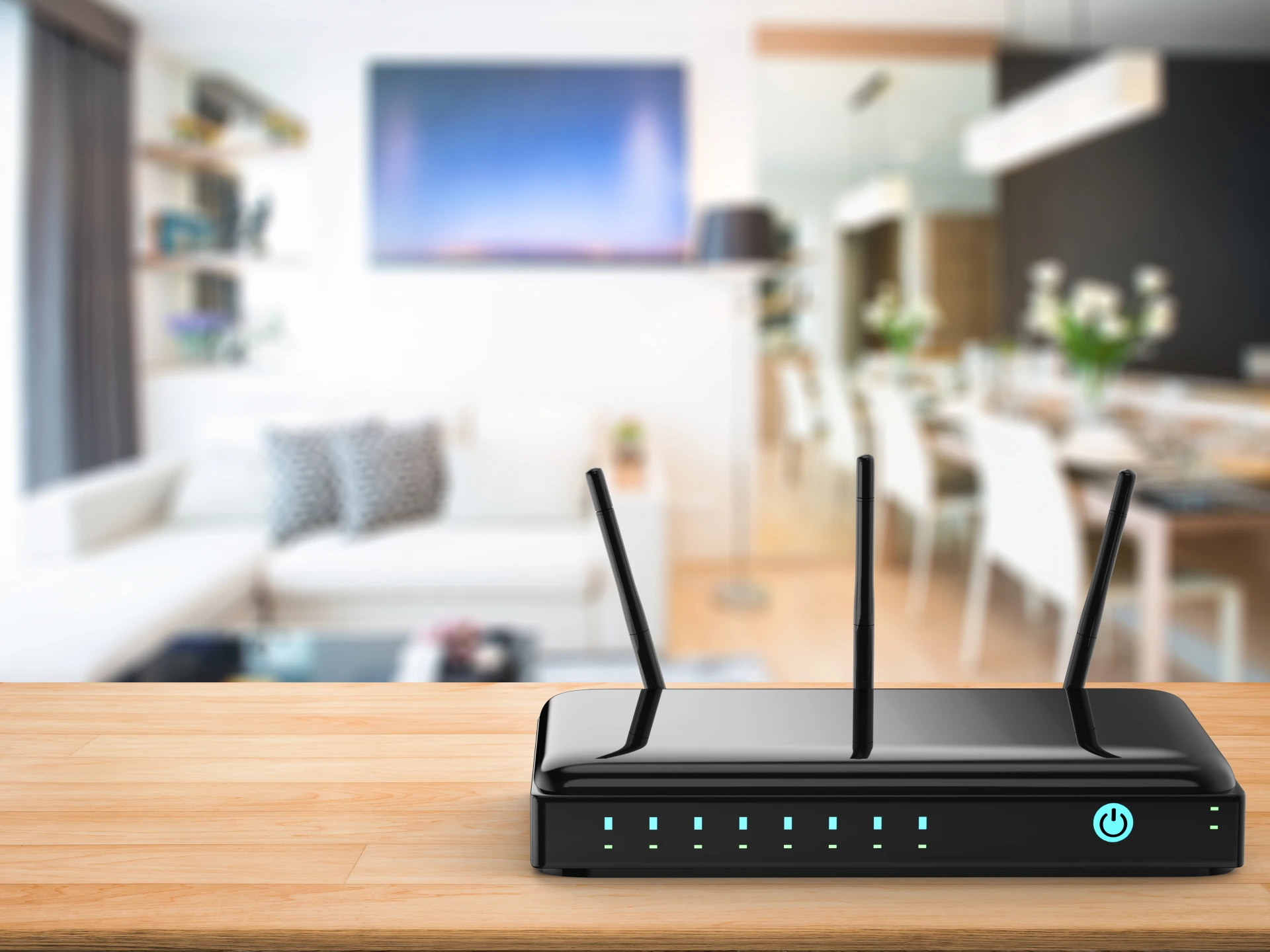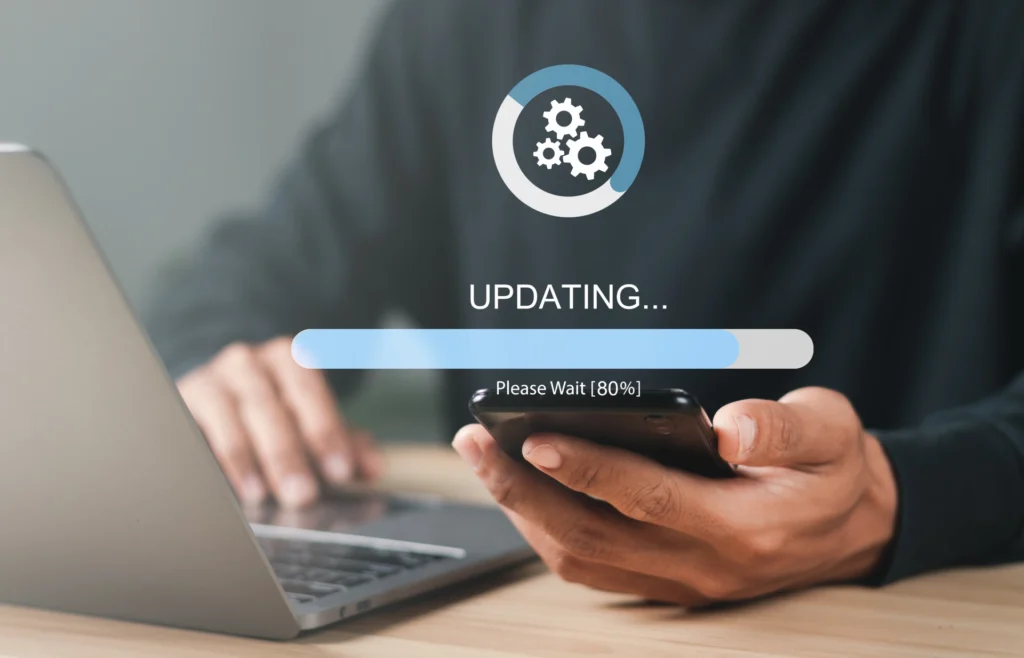Your internet speed test shows 100 Mbps, your video calls still stutter like a 90`s dial up connection. You’re not alone. Millions of people pay for fast internet but can’t get through a Zoom meeting without lag. Your Netflix streams perfectly fine.
Most people blame slow internet speed for video call lag. They call their ISP, upgrade their plan, and still face the same choppy calls. That’s because speed tests lie about what matters for video calls.
Research shows the real culprits are hidden network issues that speed tests miss entirely. Your router might be creating traffic jams. Background apps might be hogging bandwidth at the worst times. Your hardware might be overheating after 10 minutes of video.
First, the hidden cause of video call lag, called bufferbloat that affects most home networks. Second, 6 technical fixes that work better than buying faster internet. Third, how to diagnose the real problem in under 5 minutes using free tools.
1. The Bufferbloat Problem No One Talks About

Your speed test shows 200 Mbps. Your video calls still stutter. What’s really happening here meet bufferbloat the hidden network killer that makes fast internet feel slow during video calls. Bufferbloat actually is your router stores data packets in buffers before sending them out.
These buffers are like a waiting room for internet data. When your network gets busy, packets pile up in this waiting room. Good routers hold packets for 5 10 milliseconds. Bad routers create massive traffic jams.
They hold packets for 200, 300, even 500 milliseconds when someone uploads files or streams 4K video. That’s half a second of delay added to every packet traveling through your network.
Why Your Speed Test Lies ?

Speed tests measure how fast data moves when nothing else is happening on your network. Your router can still push data at 200 Mbps. But now every packet waits 300 milliseconds in line first. Speed stays the same. Router latency explodes. Real example from actual users someone with 91 Mbps internet had smooth speed tests but terrible video calls.
When they tested for bufferbloat, ping times jumped to 191ms under load What Is Bufferbloat? The Hidden Cause of Gaming Lag & How to Fix It | Netduma. Normal ping was around 20ms. Under load? Nearly 200ms.
Why Video Calls Suffer More Than Everything Else ?

Video calls need instant data flow. When your voice packets get stuck behind someone’s Netflix stream in the router queue, everything breaks down What Is Bufferbloat? The Hidden Cause of Gaming Lag video calling software makes it worse trying to help.
Apps detect these delays and create bigger buffers to prevent audio dropouts. If packets arrive 500ms late, the app waits 500ms before playing any sound Stop your video calls from stuttering | benkuhn.net. This stops choppy audio but creates obvious lag.
Network Congestion Triggers The Chaos
During peak usage times, video calls degrade and voice quality drops when other devices are active, despite high speed internet connections 4 reasons bufferbloat might be the worst networking problem you have that you don’t know about in 2025. Network congestion spikes your router latency while internet speed stays normal.
2. Why Your ISP Router is Sabotaging Your Calls?

Your video calls keep freezing. Audio cuts out mid sentence. You blame your internet speed, but that’s probably not the real problem.The real culprit? That router your cable company gave you for “free.”
Your ISP Router Does Too Much, All BadlyMost people use combo devices from their internet provider. These boxes try to be three things at once: a modem, a router, and a wireless access point.
ISP routers struggle with something called UDP packet handling. Video calls send data in small packets that need to arrive quickly and in order. When your router can’t process these packets fast enough, you get choppy calls and frozen screens.
Firmware Makes or Breaks Your Calls

Router firmware is like the operating system on your phone. It controls how your router handles internet traffic. ISP routers often run outdated firmware that prioritizes downloading files over real time communication.
Consumer routers get firmware updates more often. Business grade routers get even better treatment because companies lose money when calls fail.
Newer Isn’t Always Better
Don’t fall for the “latest model” trap. A three year old business router often beats a brand new consumer model. Better processors, more memory, and firmware designed for reliability instead of flashy features.
Many new routers pack in features you’ll never use while skimping on the basics that matter for video calls.
3. The CPU Problem Hidden In Plain Sight

Your video calls stutter and freeze, but your internet speed tests look fine. You close a few browser tabs, but nothing changes. The real problem isn’t your connection it’s your computer’s brain working too hard.Your CPU is Drowning in Video Work Here’s what most people don’t know: sending video eats up way more processing power than receiving it.
When you’re on a call, your computer has to compress your camera feed in real time before sending it out. That’s heavy lifting for your CPU. Meanwhile, watching other people’s video is much easier. Your graphics card handles most of the decompression work without breaking a sweat.
Background Apps Are Video Call Vampires

Every app running in the background steals CPU power from your video calls. That music streaming app, the dozen browser tabs, your email client constantly checking for messages they’re all taking bites out of your processing power..
Hardware Acceleration: Friend or Enemy?
Most video calling apps offer hardware acceleration. This moves some work from your CPU to your graphics card. Sometimes it backfires. Older graphics cards or buggy drivers can make things worse, not better.
What Actually Matters for Video Calls?
Forget the marketing specs. Here’s what really counts: a decent CPU (nothing fancy needed) and enough RAM so your system doesn’t use virtual memory during calls.
You don’t need a gaming computer for video calls. You just need a computer that isn’t fighting itself while trying to compress video.
4. WiFi Interference That Kills Call Quality

Your video calls work fine at 2 AM but fall apart during work hours. The connection bars look full, but your voice sounds like a robot. You’re fighting an invisible war against WiFi interference and losing. Every electronic device in your home competes for the same radio waves.
The 2.4GHz band is especially crowded. Bluetooth devices, garage door openers, and wireless security cameras all crowd this space. It’s like trying to have a conversation at a rock concert.
Your Mesh System Might Be the Problem

Mesh networks and WiFi extenders promise better coverage. Sometimes they deliver the opposite. When mesh nodes overlap too much, they interfere with each other. Each extender also adds delay to your connection. That extra hop from your device to the extender to the router creates lag that kills real time calls.
Apartment Building WiFi Hell
Your neighbors’ routers are probably stepping on your signal. Open your WiFi settings and count how many networks you see. Each one is competition. Most routers automatically pick channels, but they often pick badly. Twenty routers on the same channel create a traffic jam.
Find Your Clean Channel

Download a WiFi analyzer app like WiFi Explorer (Mac) or WiFi Analyzer (Android). These apps show which channels are crowded and which are clear. Switch your router to a less crowded channel.
If you have a newer router, try switching between 802.11ac and 802.11ax modes. Newer isn’t always better for older devices. Sometimes 802.11ac gives more stable connections than 802.11ax.
Distance and Walls Matter More Than You Think
Every wall between you and your router weakens the signal. Concrete walls are especially bad. Metal filing cabinets and mirrors also block signals. Move closer to your router for important calls. Even ten feet can make a huge difference in signal quality.
Before your next call, check your WiFi analyzer app and switch to a cleaner channel. Sometimes the difference between a dropped call and a perfect connection is just picking the right frequency.
5. The Latency vs Bandwidth Misunderstanding

You pay for blazing fast internet. Your speed test shows 100 Mbps download speeds. But your video calls still freeze and stutter. You’re confused because you think faster internet equals better video calls. That’s not how it works.You have way more speed than you need.
Even big group calls max out at 1.8 Mbps. The average US internet speed is 209 Mbps download and 62 Mbps upload. That’s more than 100 times what you need for video calls. Having faster internet is like buying a Ferrari to drive in a school zone.
Speed and Delay Are Different Things

Bandwidth is how much data you can move at once. Think of it like the width of a highway. Latency is how long it takes data to travel from point A to point B. That’s like the speed limit on that highway.
You can have a 12 lane highway (high bandwidth) with a 5 mph speed limit (high latency). Your data moves slowly even though there’s plenty of room.
Jitters the Real Enemy
Jitter happens when data packets arrive at different times. Imagine if letters in a word showed up out of order. “Hello” might become “Hlleo” or “eHllo.”Video calls need data to arrive on schedule. When packets show up late or out of order, your call software has to wait and reorganize them. That creates the stuttering and freezing you see.
Packet Loss Creates Lag
Sometimes data packets get lost completely. Your computer has to ask for them again. This creates a delay while missing pieces get resent.Even losing 1% of packets can make calls choppy. Your internet speed doesn’t matter if packets keep getting lost or delayed.
6. When to Actually Upgrade Your Internet

Most people rush to buy faster internet when their calls lag. That’s usually the wrong move. But sometimes you really do need more speed. Upload speed matters more than download your download speed gets all the attention. But video calls care more about upload speed. When you talk on a call, you’re uploading your video and voice to everyone else.
Check your upload speed right now. If it’s under 5 Mbps and you have multiple people on calls, that’s your problem. Most cable internet gives you great download but terrible upload.
How To Upgrade Your Internet Speed

Each person on a video call needs about 2 Mbps upload. If three family members are on calls at the same time, you need at least 6 Mbps upload. Add in other activities. Someone streaming Netflix needs 3 Mbps download. Gaming takes 1 Mbps. Cloud backups can eat 5+ Mbps upload.
Write down what everyone does online at the same time. Add up the numbers. If your total is close to your internet speed, you need an internet speed upgrade.
5G Internet Changes the Game

Rural areas have limited choices. If cable and fiber aren’t available, 5G internet might work. Verizon and T Mobile offer plans with better upload speeds than old DSL.5G works best if you live near a cell tower. The speed varies more than cable, but it beats slow DSL for video calls.
The Rare Cases Where Speed Is Actually the Problem
You need more speed if you have more than 4 people on video calls at once . Upload speeds under 10 Mbps total. Multiple 4K streams running during calls. Large file uploads happening during meetings. Most households don’t hit these limits. Fix bufferbloat and router issues first.
They’re cheaper and work better than paying for speed you don’t need. Check your actual usage before upgrading. Your current internet might be fine once you optimize it properly.
7. Background Apps Stealing Your Bandwidth

Cyber security software show alert of cyber attack for protection snugle. Danger from virus, phishing and cyber fraud. Your video call starts perfect. Then someone in your house opens Netflix. Your call turns into a slideshow. The hidden bandwidth hogs Netflix 4K streaming eats 25 Mbps.
That’s more bandwidth than 15 video calls combined. One person watching a movie can kill everyone else’s calls.But streaming isn’t the only thief. Your smart TV downloads updates in the background. Your phone backs up photos to the cloud. Windows Update decides to download a 2GB file right during your important meeting.
Find The Bandwidth Thieves
Open Task Manager on Windows or Activity Monitor on Mac. Look for apps using lots of network data. You’ll be surprised what you find running. Check your smart devices too. Ring doorbells, security cameras, and smart speakers all use bandwidth. They often update themselves at random times. Multiple camera apps cause chaos.
Never run two camera apps at once. If Zoom is open, close Skype and Teams. Multiple applications fighting for your webcam creates lag and crashes.
Quick Fixes for Background Applications

Pause cloud backups before important calls. Turn off automatic updates on smart devices. Close streaming apps completely don’t just minimize them. Set up bandwidth allocation on your router if it has the feature. Give video calls top priority over everything else.
Ask your family to pause Netflix during your calls. Most bandwidth problems disappear when you stop competing with entertainment streaming for the same internet connection.


